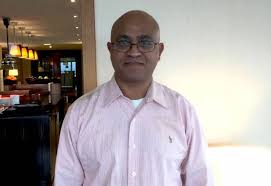Guyana, Africa, Caribbean watch and wait for vaccine
Dear Editor,
How and when will Guyana and other poor developing countries in the Caribbean, Latin America, Africa, and Asia get the vaccine to combat (slow down) the Covid-19 virus? They watch and wait for the vaccine because they lack capacity to develop one. Few have the resources to pay for the vaccine to inoculate or immunize their population. And fewer have resources or scientific capacity to produce their own vaccine. So inevitably, the poor countries will have to get the vaccine from those that manufacture or produce it.
Only four countries (UK, USA, Germany, Russia, all White countries) plus China and India have produced or are close to producing a vaccine that fights the virus. India manufactures over 60 percent of the world’s vaccines, and it has orders to manufacture over three billion of the Covid vaccine. India is overwhelmed with orders but the Indian government says it has instructed manufacturers to expand capacity to save the world from the virus. It is amazing that just decades ago, most of the world shunned or hadn’t much positive things to say about India, including almost half Guyanese, and now the world turns to India for a vaccine for survival.
So how will Guyana or the poor countries get the vaccine? The country can order directly from India but how many vaccines can Guyana financially afford and how many can India supply given the entire world, including the four White countries that discovered a vaccine, is turning to India for orders? Vaccines can also be sourced from China that has rolled out its version, which the developed world has avoid. Two African countries with resources and scientific lab to develop a vaccine, Nigeria and South Africa, are entering the first phase of lab experimentation, and as such many months away from producing one; human trials are being conducted on one vaccine in South Africa. Mexico, Argentina, Brazil are experimenting in the first and second phases of vaccine development.
The World Health Organization has ordered one billion vaccines, less than a third of what is needed to immunize the population in poor countries with one dose; two doses are needed. It is not reported from which manufacturer(s) WHO ordered and it is not known how they will be distributed. In all likelihood, the WHO ordered vaccines would be distributed to the 92 poor countries proportionally based on population size. The wealthier countries can afford the vaccine. India and China, with 2.9 billion people, won’t need WHO vaccines since they are utilizing and paying for their own.
The 1.2 billion people in the developed countries would also pay for their own vaccines. WHO funded vaccines would go to poor countries, some three billion people, excluding India and China, of Africa, Asia, Latin America, and Caribbean. Guyana may get just about 50K; it is reported that Guyana is also sourcing some 50K vaccines from India, still well short of over 1.6M needed. As a friendly ally, India is likely to facilitate Guyana’s request but not before February. India plans to inoculate 300M of her 1.4 billion citizens by then, training almost 200K medical staff to carry out the immunization programme set to begin in January.
And which vaccine should people take or Guyana order? Which is most effective or efficacious? And which has side effects. The side effects of the four vaccines that have been rolled out would not be known until weeks after human immunization. The four ‘White countries’ reported an efficacy of over 90 percent, meaning it worked to disable or prevent the virus of 90 percent of those tested in phase three (final) trials. China reported an efficacy of over 70 percent and Indian trials of phase three so far is over 75 percent; one is almost 99 percent though the human trials have been relatively small. Indian scientists want to continue testing before any roll out of a vaccine which is likely to be ready in early or mid January.
The Indian trial of the three vaccines is continuing and a dozen more vaccines are in the pipeline finishing up phase two, with six close to entering phase three, or final human trials that would take up to three months of experimentation and studies. The Indian government prefers to inoculate its citizens with its own locally produced vaccine, likely in mid January. As such approval for immunization of the four (White countries) rolled out vaccines is pending; approval is likely to be granted for at least one which was developed in partnership with Indian scientists at a private drug manufacturing lab in India with trials on 29K Indians and is currently being produced in India by the millions of bottles daily. India is producing virtually all, over 100m, of the Russian developed vaccine that is also being tested in India among thousands of Indians.
The separate Indian government funded vaccine development (experiments, animal trials, human tests, and production) would be the cheapest and the Indian government under Prime Minister Modi has committed to making its government funded vaccines available to the world with priority given to its South Asian neighbours. The Modi government says it would work with governments around the world to make available vaccines developed or produced in India. Modi has been interacting with leaders of developed countries in facilitating production of vaccines in India and shipping them abroad.
African and other poor countries prefer not to rely on vaccines from abroad, but they have no choice since they can’t get one anytime soon. But drug manufacturers in rich countries could hoard supplies, leaving poorer nations vulnerable. They would be better off courting India and China. The latter has been donating vaccines to several friendly countries including Indonesia, and some Asian and Arabic countries have ordered the Chinese vaccine. European countries have not ordered the Chinese vaccine, preferring the American or German or British vaccines for reasons they won’t divulge. Guyana should study all the possibilities of efficacy and follow the advice of WHO on vaccine procurement and or access more from India.
Yours truly,
Vishnu Bisram






















